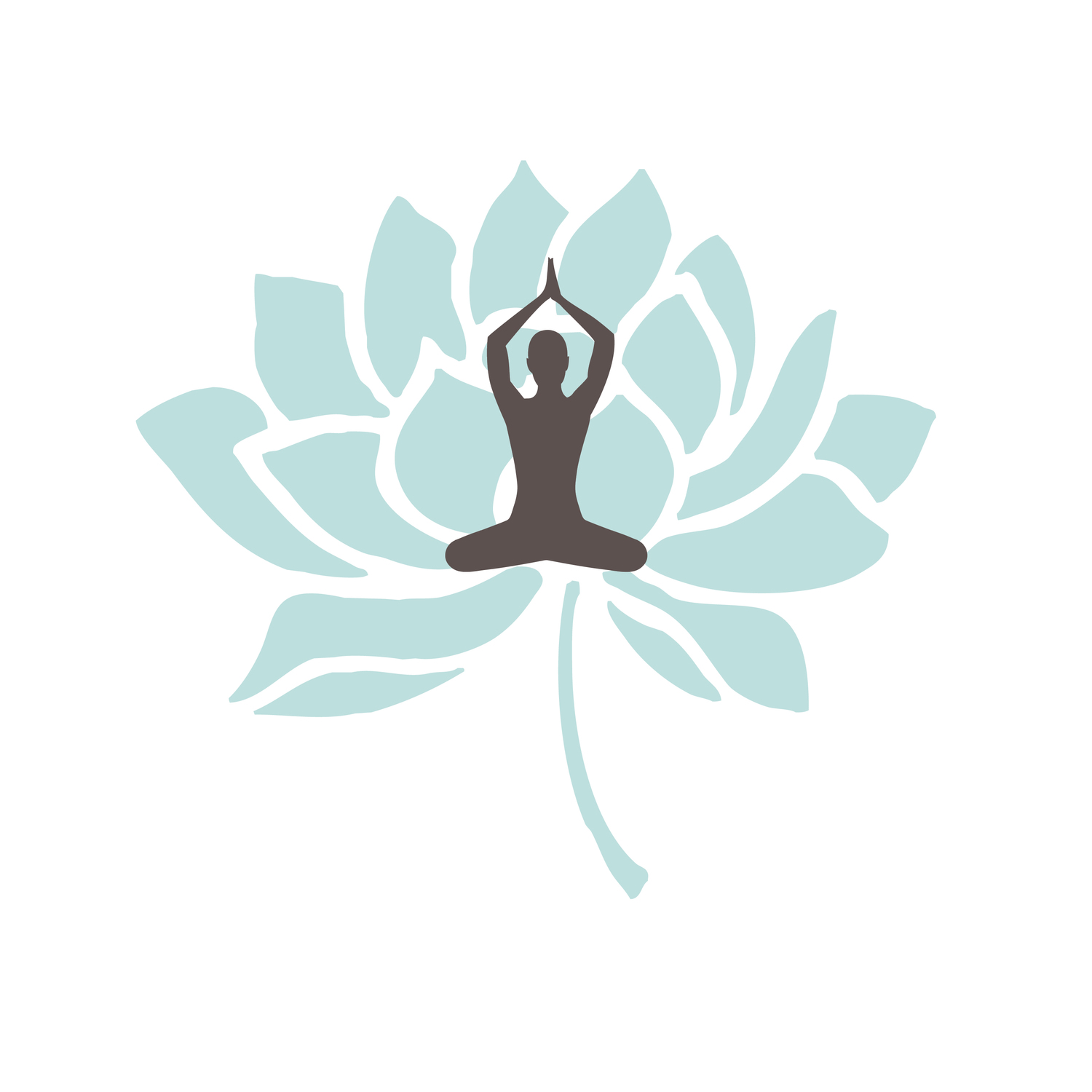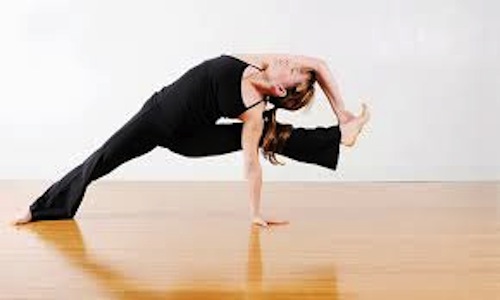We're grateful to have had the opportunity to chat with Tonya Mock, host of AZTV7's Morning Scramble, along with our friend Andrea Goeglein, (aka Dr. Success) an executive coach, author and all-around wonderful human being. This clip gives you a little taste of what our book is about.
THE MOST DIFFICULT POSE
Not this one.
Not this one.
An interviewer recently posed this question to me:
“What is the toughest yoga pose?”
What a question!
So many yoga poses are challenging. The most advanced call for a perfect confluence of strength, flexibility, alignment and focus. I often feel wistful and envious of the graceful models on the covers of "Yoga Journal," who smile in the kinds of impressive poses I can do only in my dreams. As for the wild contortions seen in YouTube videos and myriad yoga clothing advertisements? Well, maybe in my next life.
This one!
Yet one of the most challenging poses in my experience as a practitioner and a teacher is savasana. Yes, corpse pose — the one where you lie quietly on the floor at the end of practice, eyes closed, limbs outstretched and relaxed.
It’s counterintuitive, I know. Even so, in my experience savasana is among the most difficult and essential poses in the practice of whole yoga (not just the physical postures in asana, but all eight limbs.)
Savasana gives you the opportunity to experience some of the richest benefits yoga offers: self-awareness, clarity and absorption. The challenge of savasana speaks to learning to quiet the mind and developing the ability let go. It is a practice of withdrawing the senses (pratyahara), one of the ways we can consistently find internal peace.
The qualities called for in savasana pose can be especially challenging in our crazy, chaotic, go-go-go-faster culture. This was underscored in a blog published this week by my friend Becky Robinson, a social media guru who runs a business called Weaving Influence. “I can tell you about what I did this weekend, but it’s what I DIDN’T that is more significant,” she wrote. Because much of her business centers on social media presence, she is typically tethered to electronic gadgets. But last weekend, she let go. She withdrew from the loud demands of her phone and computer for the experience of being, of staying present to her life. The experience was so meaningful that Becky has threatened to make it a monthly event.
When I first began practicing yoga, I considered savasana a waste of my valuable time. I used to sneak out right before the lights were dimmed, figuring I had better ways to invest that time. Yes… all five or ten minutes of it. Looking back, I shake my head at how silly it was to have robbed myself of that small gift of relaxation and release. It wasn't time I had wasted — I discarded the chance for a little oasis of serenity in my demanding schedule.
As a yoga teacher, I smile when I watch people fidget their way through savasana. It’s a smile of recognition, because I still sometimes find it the most challenging pose. As I lie back on the mat, my rebel mind asserts itself. It begins building endless To Do lists, or re-imagines conversations I should have had with So-and-So instead of the ones I had. Sometimes the outside noises irritate or distract me. I start analyzing the sensations in my body.
Happily, these days I can usually quell the rebellion by reconnecting to my breath and returning to the practice of letting go. The practice. This is the value of yoga, and the challenge.
I may never be able to achieve a handstand in the middle of the room or get my legs behind my neck. And that's all right. Even though it will never get me on the cover of Yoga Journal, I can rock a pretty consistent savasana. I'm getting better at the most challenging pose.
LET YOGA STAY IN SCHOOL
Hang on. It's not over.
On Monday, the organization that filed a lawsuit against California’s Encinitas School District alleging yoga is a religion and should not be offered in public school appealed a ruling that said the school’s program could continue.
Dean Broyles, president of the National Center for Law & Policy, filed the original lawsuit last October on behalf of parents. The nonprofit was established to defend religious freedom, traditional marriage and the sanctity of life. Parents who objected to the Encinita's school yoga program, funded through a grant from the K.P. Jois Foundation (recently renamed the Sonima), argued it established a practice of religion. In July, San Diego Superior Court Judge John Meyer ruled that the teaching of yoga in public schools does not establish a government interest in religion and has a legitimate secular purpose as part of the district’s physical education program.
Lots of experts have weighed in on this debate, which shows no signs of abating. Author Katherine Stewart alleged in a magazine article that the National Center of Law & Policy’s lawsuit was at best hypocritical, because the organization champions Christian-oriented programming in the same school district. The Christian Broadcasting Network did a story featuring Laurette Willis, who warned that yoga presents a danger to Christian believers. She has created an alternative called “PraiseMoves,” which are adapted yoga poses set to Bible scripture. The popular blog YogaDork weighed in with its customary snarky tone. A candidate for Virginia’s attorney general attorney office has alleged that yoga is a tool of Satan. Yogi Mark Whitwell argues that yoga can help shore up one’s religious beliefs, regardless of brand. As with most issues that become politicized, contention has become the point, and no one is convincing anyone of anything.
We openly acknowledge our own biases. One is that children benefit greatly from engaging in yoga practices that include the physical poses and meditation. Research is shoring up this assertion, and in today’s overwhelming, chaotic world, why rob children of something that can help them navigate its complexities? (I have often said I wished I had learned about and begun practicing yoga when I was much younger, because it has had such a profound and positive affect on my life.)
Secondly, while yoga philosophy definitely has spiritual elements to it, we don’t see the logic of calling a religion. The spiritual aspect of yoga is defined by the practitioner, not by any one organization or dogma handed down by a central authority.
We know plenty of people, even devoted practitioners, who see yoga as nothing more than a form of physical exercise. In our Western culture, the physical aspect is so emphasized that most people don’t even realize there is more to it than that. When we were doing research for Yoga Wisdom at Work, we were surprised how many experienced yogis — even some teachers — had never heard of Patanjali’s Sutras or the Eight Limbs of Yoga. That’s one reason we find this “yoga is an organized religion” assertion so ironic. The argument makes about as much sense as defining gardening as a religion because some people believe God created the earth an people kneel down when they weed.
The debate will rage on. Religion engenders passions, and people’s beliefs are deeply held. We’re not experts — just committed practitioners. We’re not here to offer evidence, only our experience.
And our experience fuels the hope that yoga will stay in school.
PRACTICE MAKES PRACTICE
A bike ride in Portland created a shift in my thinking about how I approached cycling.
“Practice makes perfect” is something we hear from the time we are small. The aphorism reveals a cultural belief that it’s about the perfection — not the practice. In this small phrase lies great potential for misdirection. We forget that practice is the point. Everything is practice.
As a cyclist, I used to log 200-300 miles a week, and I was frequently disappointed by my lack of consistent improvement. I was so attached to the outcomes of my riding that it affected my moods. When I had a good performance day I was up. When it didn’t go so well, it brought me down. Then something changed.
During a trip to Portland, Maren and I did a 30-mile ride around the city with our daughter Sonnet and her boyfriend (now husband), Chris. I was riding a 1970s model Schwinn 3 speed with a big basket. The weather was typical, overcast with damp mists frequently turning to light rain. We stopped for breakfast and lunch along the way. When I surrendered to experience instead of obsessing about performance, I had a great time.
After that, my thinking about cycling shifted. I realized riding is a neutral. Whatever value it has is assigned by me. It only became “good” or “bad” when that was the label I gave it. By letting go of an attachment to “perfect,” I could make every ride a good ride. Now I push myself because it feels good. If I don’t enjoy it, I don’t do it.
We have similar attitudes at work. We have our own picture of what the outcome should be, and so do our coworkers. If we get too attached to our outcome, efforts become about getting our way, even at the expense of others. We begin to drain joy from the work.
Surrender
The wisdom of yoga addresses this sort of attachment through a precept called ishvara-pranidhana — or surrender. It is the practice of recognizing and honoring that we are connected to something greater than ourselves. That applies to work, a place where people come together to create something bigger than self.
Surrender doesn’t mean giving up or defeat. Nor does it mean that planning is unnecessary or that we shouldn’t strive toward a common goal. We still need to give work our best effort, but shift our orientation to those efforts. It means focusing on the daily practice of working for the good of the whole by letting go of the need to control the outcome, which is impossible anyway.
Yoga is action and action is practice.
Consider listing the meanings and associated feelings evoked by the word “surrender” in the context of work. How do those feelings affect the actions you take at work? What would you gain if you were to practice surrender at work, and what would you lose? (Remember that gains are not always positive and losses negative. If you’re making a change, you might gain anxiety, for instance.)
Try to notice how you feel when you become attached to an outcome. What practices could you employ to stay present and focused on the good of the whole as opposed to getting your way?
By becoming aware of potential pitfalls, and creating practices that will help you let go of attachment, you will become more sane and fulfilled at work.
Practice, “repeatedly performing or systematic exercise,” requires internal focus with an outward gaze.
It’s just like riding a bicycle.








